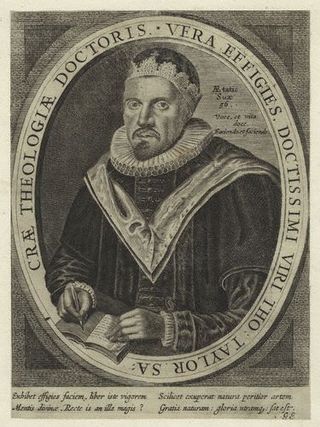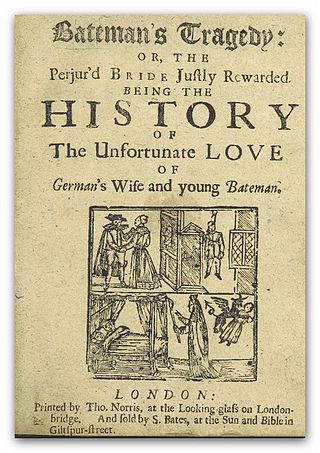Related Research Articles

Sir William Dugdale was an English antiquary and herald. As a scholar he was influential in the development of medieval history as an academic subject.

Garter Principal King of Arms is the senior king of arms and officer of arms of the College of Arms, the heraldic authority with jurisdiction over England, Wales and Northern Ireland. The position has existed since 1415.

Heraldic visitations were tours of inspection undertaken by Kings of Arms throughout England, Wales and Ireland. Their purpose was to register and regulate the coats of arms of nobility, gentry and boroughs, and to record pedigrees. They took place from 1530 to 1688, and their records provide important source material for historians and genealogists.
Francis Thynne was an English antiquary and an officer of arms at the College of Arms.

John Guillim of Minsterworth, Gloucestershire, was an antiquarian and officer of arms at the College of Arms in London. He is best remembered for his monumental work on heraldry, A Display of Heraldry, first published in London in 1610.
Henry Chitting was a long-serving officer of arms at the College of Arms in London.

Thomas Lant (1554–1601) was a draftsman and long-serving officer of arms at the College of Arms in London. Lant was born in Gloucester and was one of seven children of Thomas and Mary Lant. When Lant was twelve years old, he became a page to Richard Cheney, the Bishop of Gloucester. When Cheney died in 1579, Lant again became a page, this time for Henry Cheney. It was through Lord Cheney that Lant became connected with Sir Philip Sidney. The two accompanied each other to the Low Countries in 1585. Lant was the draftsman of roll recording Sidney's funeral procession at St Paul's on 16 February 1587.
Sir Charles George Young (1795–1869) was an English officer of arms. He served in the heraldic office of Garter King of Arms, the senior member of the College of Arms in England, from 1842 until his death in 1869.

Sir Thomas Shirley, of Wiston in Sussex, was an English Member of Parliament, government official and courtier who is said to have suggested the creation of the title of baronet.

Thomas Taylor (1576–1632) was an English cleric. A Calvinist, he held strong anti-Catholic views, and his career in the church had a long hiatus. He also attacked separatists, and wrote copiously, with the help of sympathetic patrons. He created a group of like-minded followers.

Sampson Lennard, of Chevening in Kent, was an English Member of Parliament who represented an unusually large number of different constituencies during the reigns of Elizabeth I and James I.
William Flower (1497/98–1588) was an English Officer of Arms in the reigns of Henry VIII, Edward VI, Mary I and Elizabeth I. He rose to the rank of Norroy King of Arms, serving in that capacity from 1562 until his death in 1588.

Robert Glover was an English officer of arms, genealogist and antiquarian in the reign of Elizabeth I. In the College of Arms, he rose to the rank of Somerset Herald of Arms, serving in that capacity from 1571 until his death in 1588. As marshal and deputy to his father-in-law, William Flower, Norroy King of Arms, he participated in heraldic visitations throughout northern England.

Robert Cooke was an English Officer of Arms during the reign of Elizabeth I, who rose swiftly through the ranks of the College of Arms to Clarenceux King of Arms, serving in that office from 1567 until his death in 1592–3.

Margaret Fiennes, 11th Baroness Dacre was a suo jure peeress having been created Baroness Dacre by King James I of England in 1604. She was the daughter of Thomas Fiennes, 9th Baron Dacre who was executed for murder in the year of her birth. His title and lands had been forfeited to the crown. Baroness Margaret's husband was Sampson Lennard MP.

Henry Lennard, 12th Baron Dacre was an English baron and politician. He was the son of Margaret Fiennes, 11th Baroness Dacre and Sampson Lennard.

William Sampson (1590?–1636?) was an English dramatist.
George Owen was a Welsh officer of arms, York herald from 1633.
William Wyrley (1565–1618) was an English antiquarian and officer of arms, who became Rouge Croix pursuivant.

Sir Thomas Parker of Ratton was an English landowner and politician who sat in the House of Commons between 1626 and 1656. He was elected MP for Hastings in 1626, Seaford in 1641, Sussex in 1656 and was knighted in 1617.
References
- 1 2 "Lennard,Sampson". Oxford Dictionary of National Biography (online ed.). Oxford University Press. doi:10.1093/ref:odnb/16446.(Subscription or UK public library membership required.)
- 1 2 3 4 5 Cooper 1892.
- Attribution
![]() This article incorporates text from a publication now in the public domain : Cooper, Thompson (1892). "Lennard, Samson". In Lee, Sidney (ed.). Dictionary of National Biography . Vol. 32. London: Smith, Elder & Co.
This article incorporates text from a publication now in the public domain : Cooper, Thompson (1892). "Lennard, Samson". In Lee, Sidney (ed.). Dictionary of National Biography . Vol. 32. London: Smith, Elder & Co.